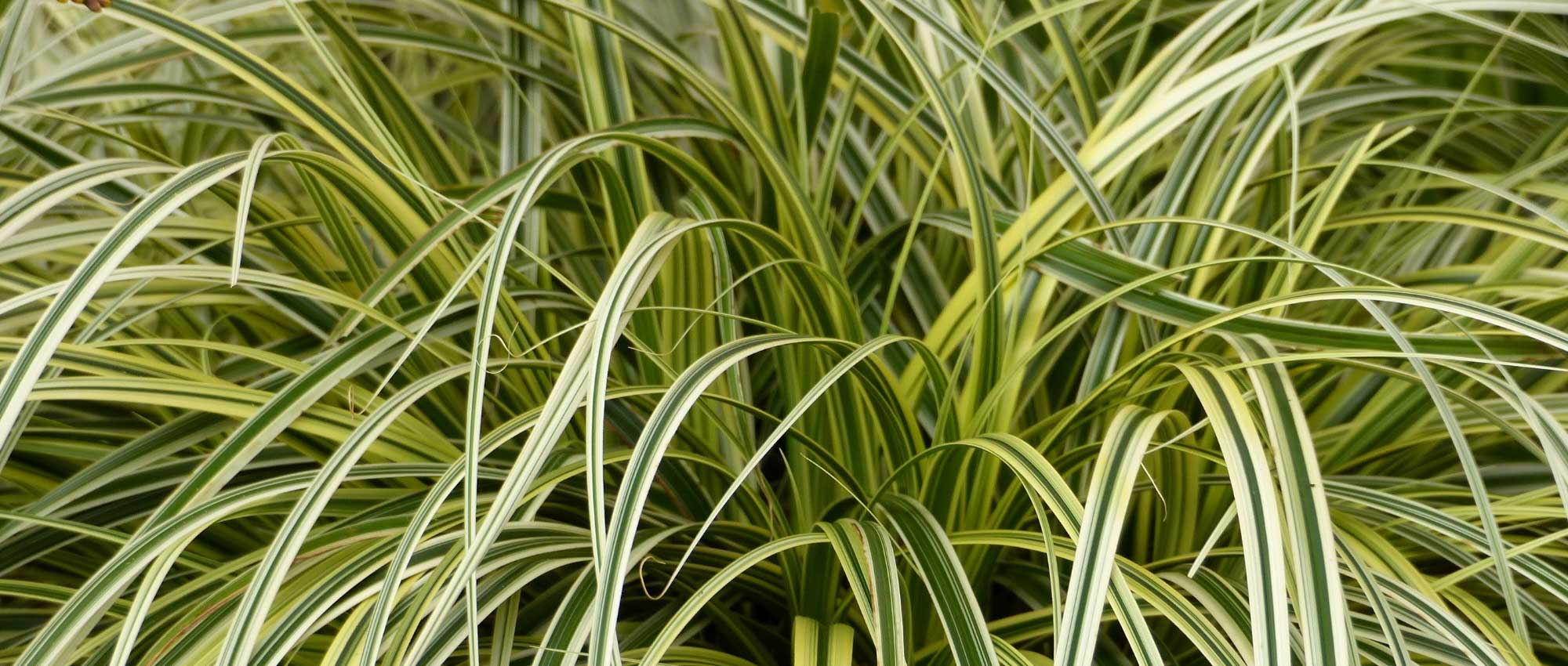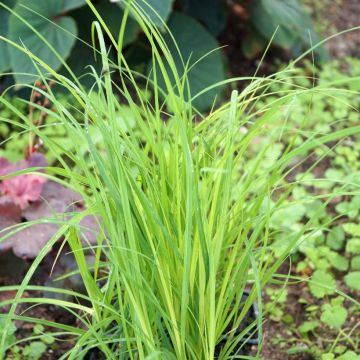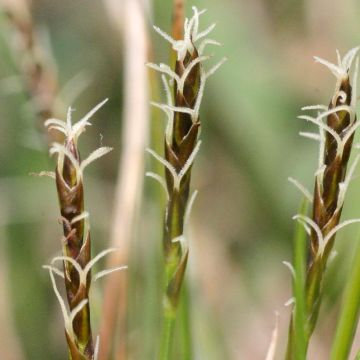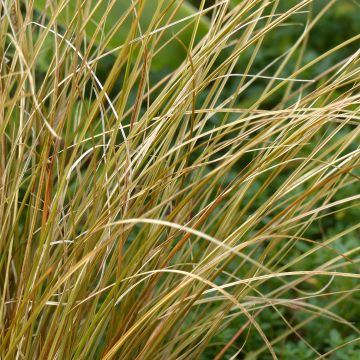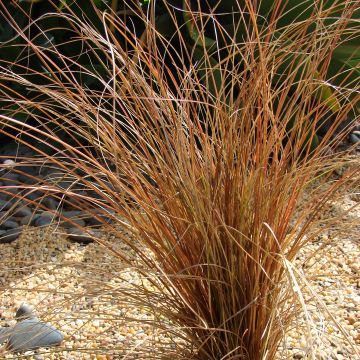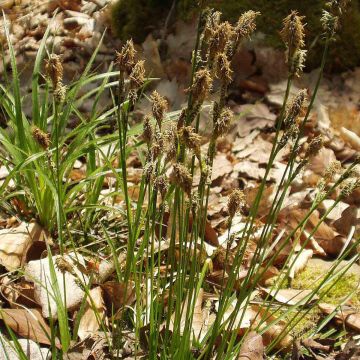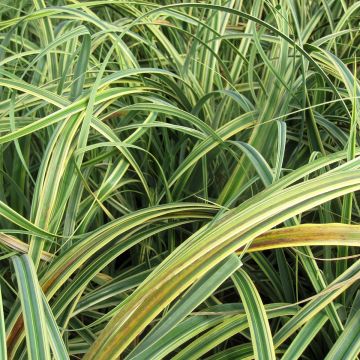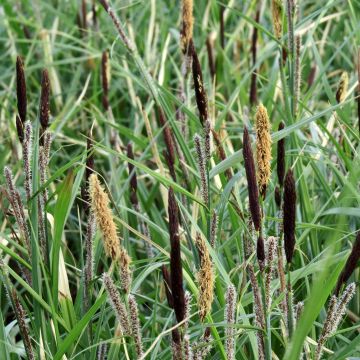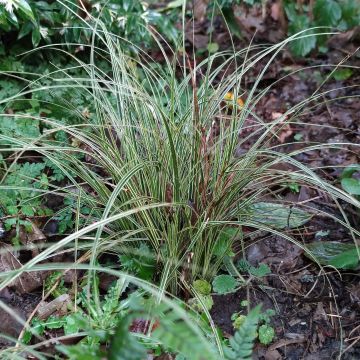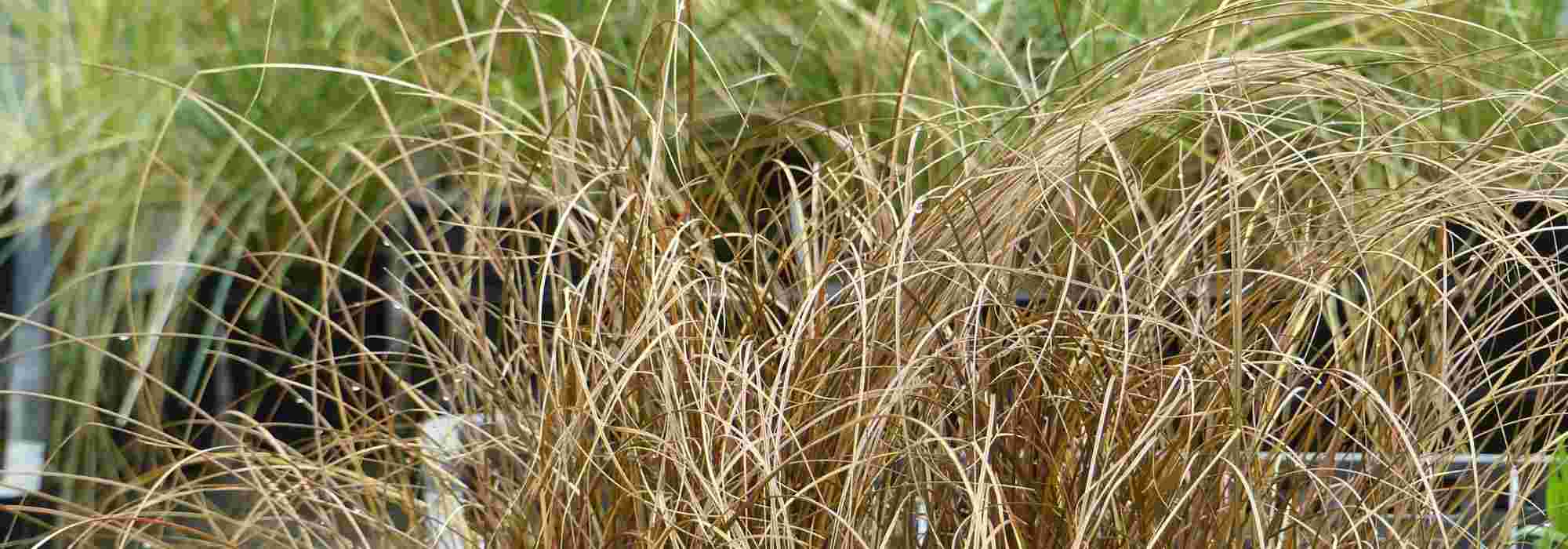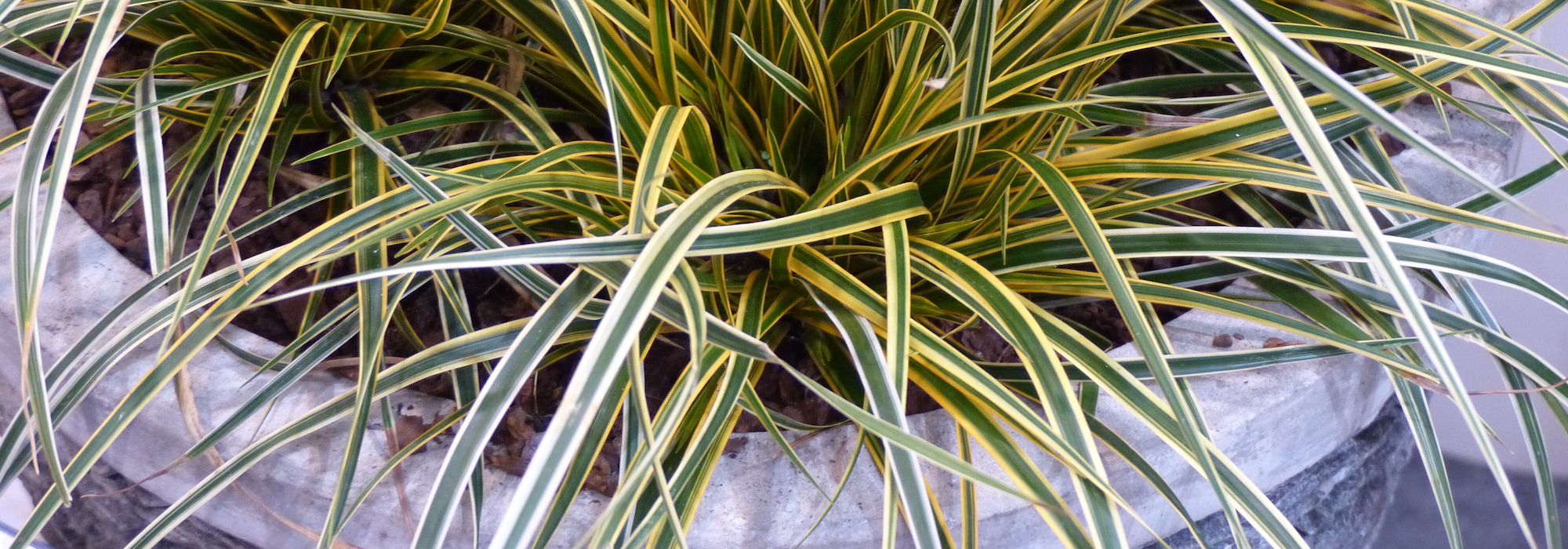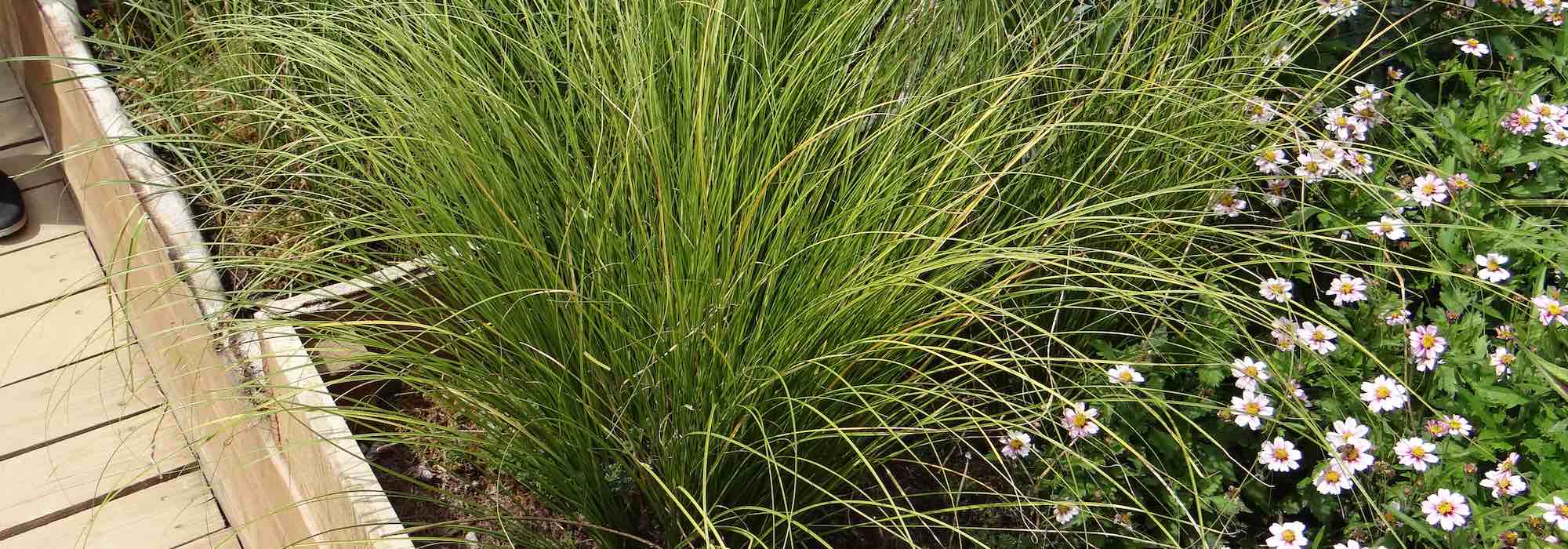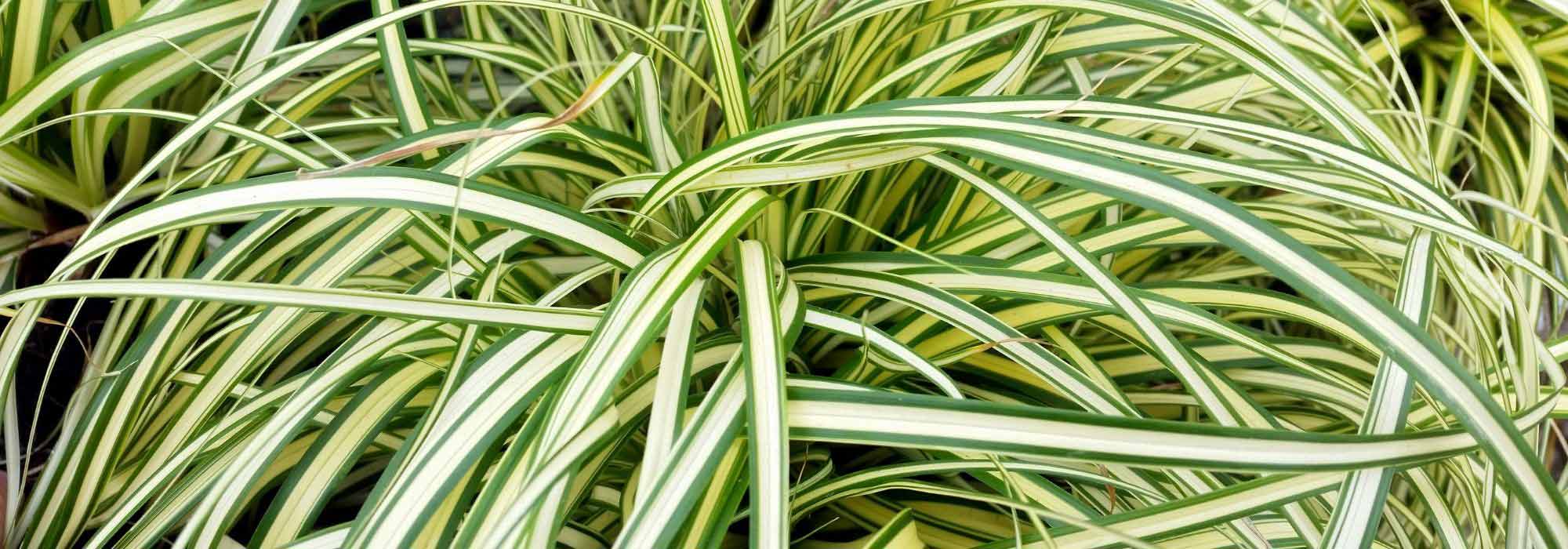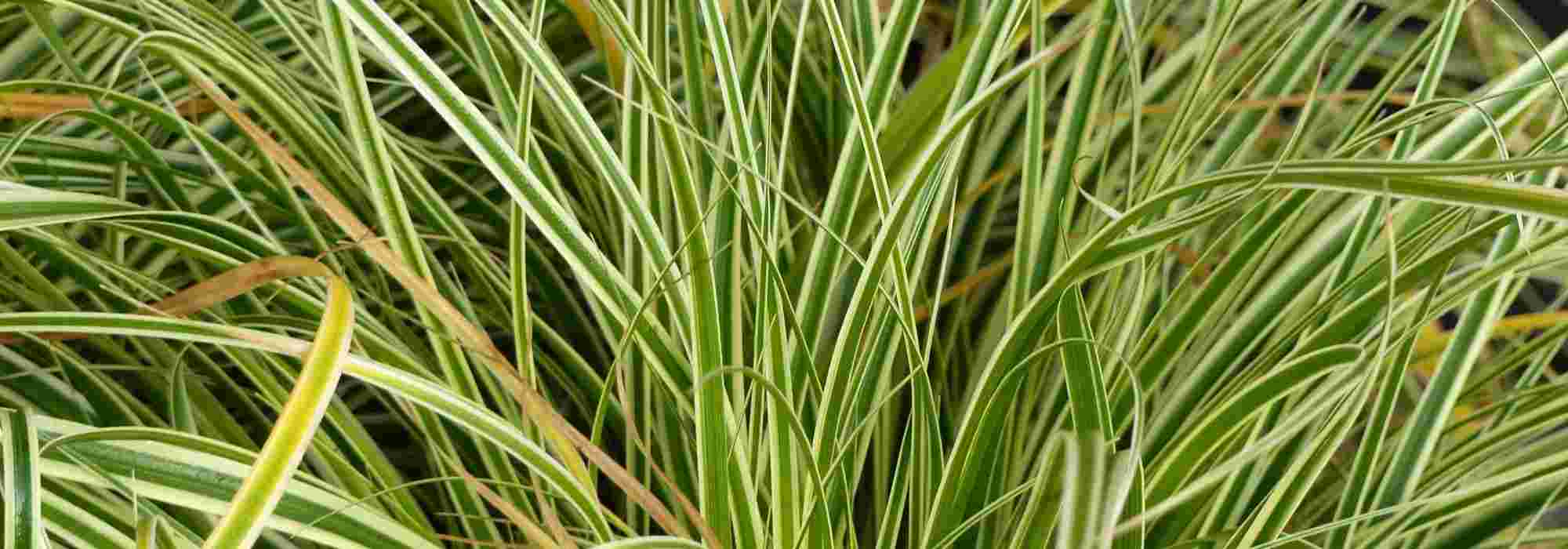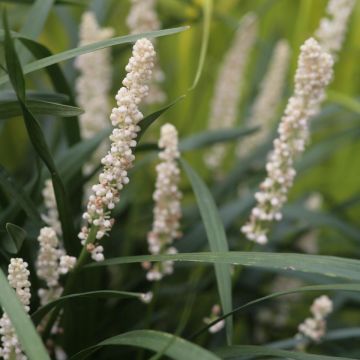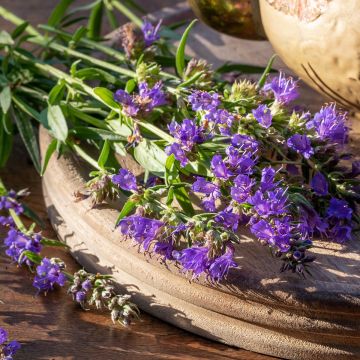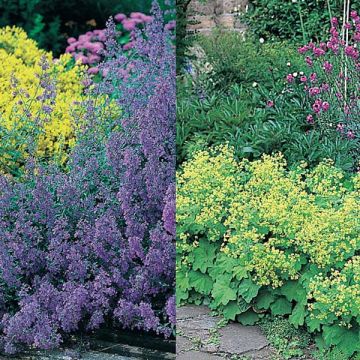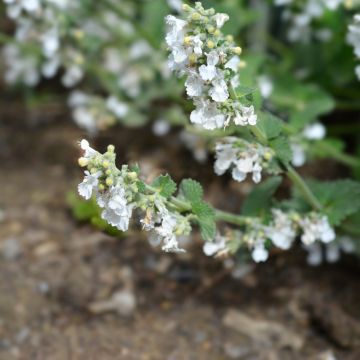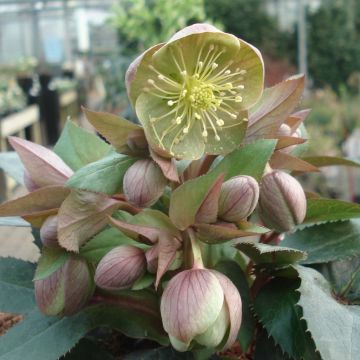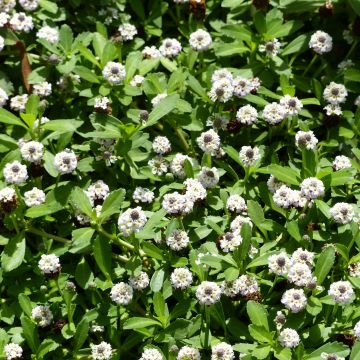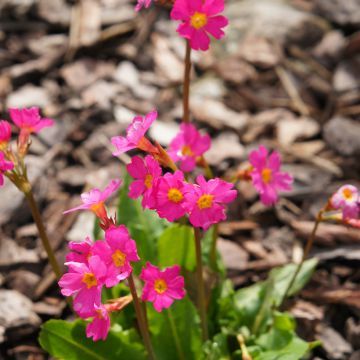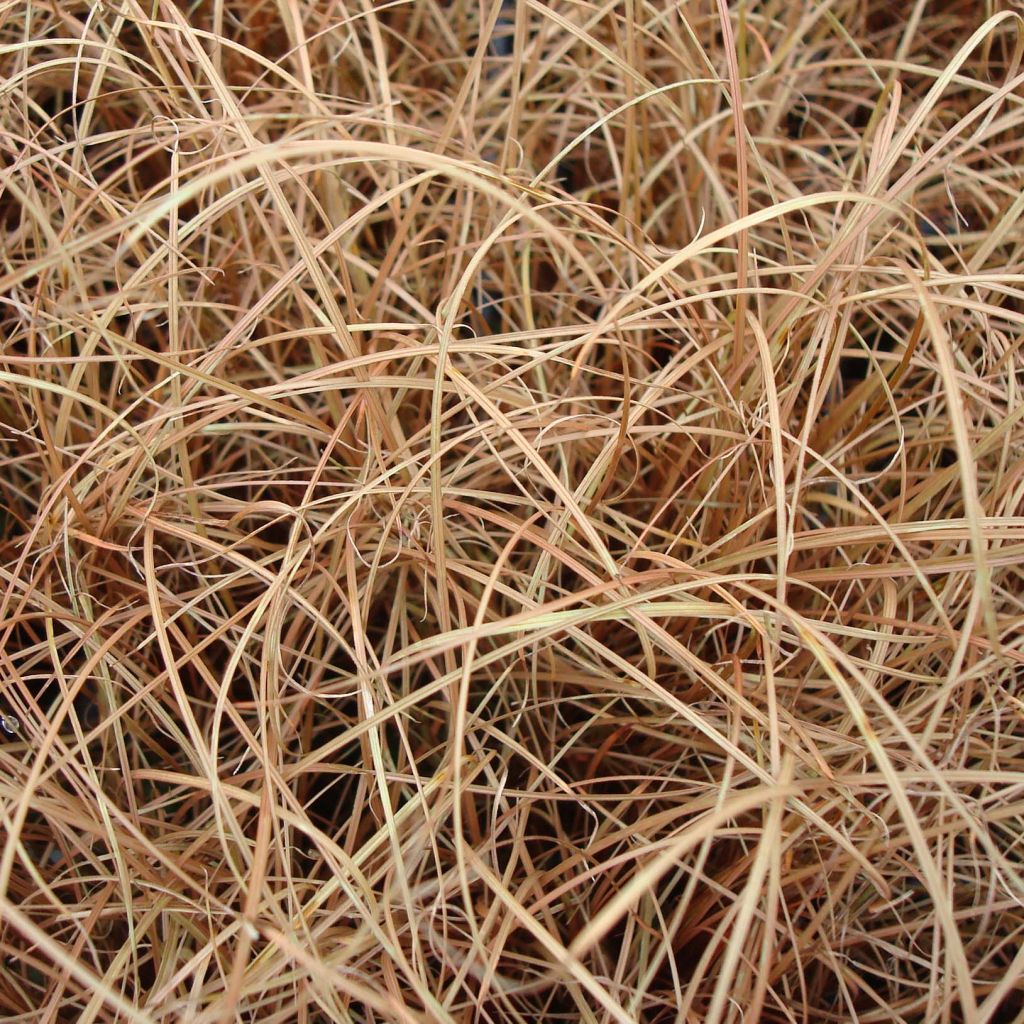

Carex flagellifera
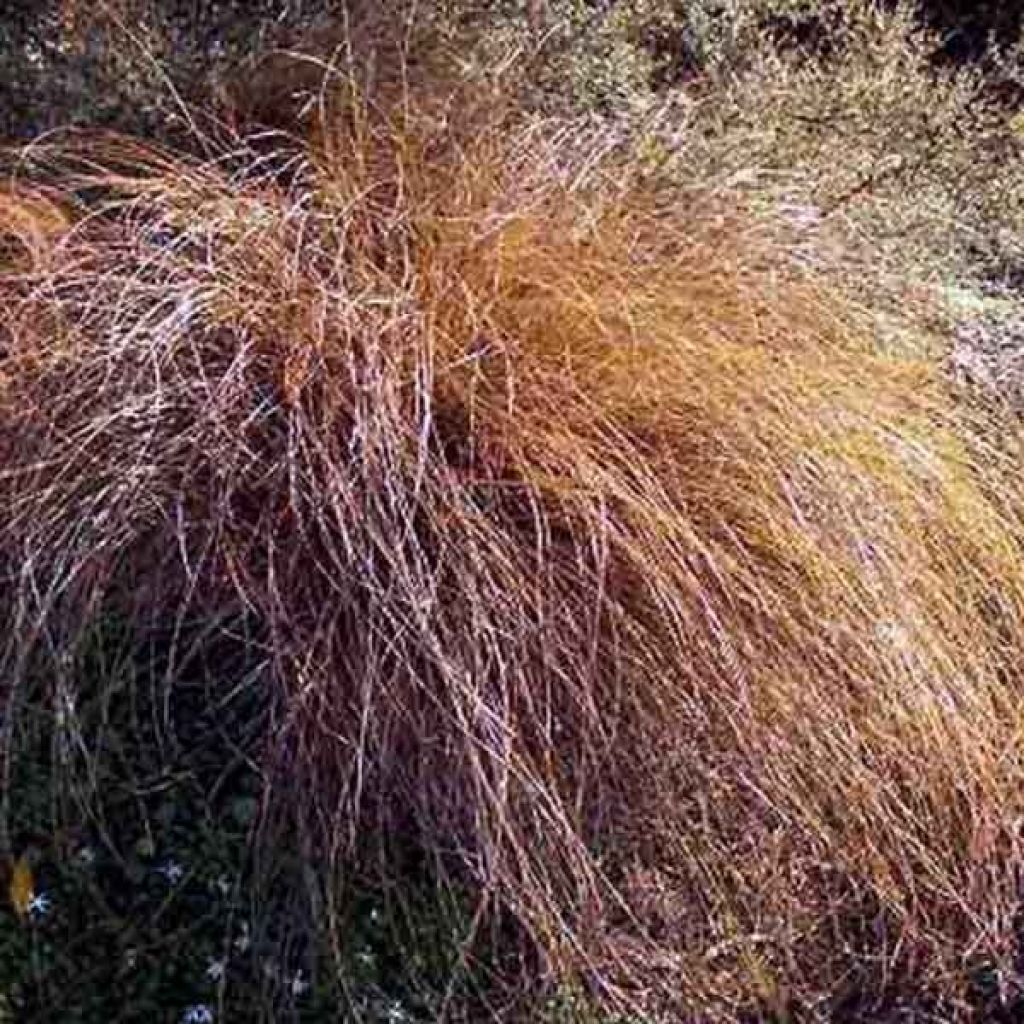

Carex flagellifera
Carex flagellifera
Carex flagellifera
Weeping Sedge, Brown Sedge, Sedge grass
Field of plants arrived in very poor condition, to see if it recovers.
Dim, 13/04/2022
Special offer!
Receive a €20 voucher for any order over €90 (excluding delivery costs, credit notes, and plastic-free options)!
1- Add your favorite plants to your cart.
2- Once you have reached €90, confirm your order (you can even choose the delivery date!).
3- As soon as your order is shipped, you will receive an email containing your voucher code, valid for 3 months (90 days).
Your voucher is unique and can only be used once, for any order with a minimum value of €20, excluding delivery costs.
Can be combined with other current offers, non-divisible and non-refundable.
Home or relay delivery (depending on size and destination)
Schedule delivery date,
and select date in basket
This plant carries a 12 months recovery warranty
More information
We guarantee the quality of our plants for a full growing cycle, and will replace at our expense any plant that fails to recover under normal climatic and planting conditions.

Would this plant suit my garden?
Set up your Plantfit profile →
Description
Carex flagellifera is also called the Flagellate Sedge, probably because of its long and thin curly leaves resembling 'whips'. Its colour is more bronze than red, which is very ornamental throughout the year. It is distinguished by its floral stems that resemble leaves. They elongate with fruit growth, and eventually lie down in a tangled mass on the ground. It is appreciated in the garden for its somewhat wild mane-like appearance and its muted colour of aged metal. Simply surround it with orange flowers for a sumptuous combination!
Carex flagellifera (synonym Carex lucida) belongs to the Cyperaceae family, native to New Zealand. This perennial has a grass-like appearance. It forms somewhat loose, fairly rigid, widely spreading clumps, reaching a height of about 75cm (30in) and a diameter of 40cm (16in). The evergreen foliage is similar in appearance to Carex buchananii and Carex testacea, taking the shape of a "whip". Its basal sheathing leaves are long, thin, linear, with tapered edges, and slightly spiralled. From spring to summer, their colour is a mix of brown and bronze. With cool autumn nights, they take on slightly coppery hues. In June-July, short brown to black spikes, from 1 to 3cm (1in), discreetly appear, carried by thin stems about 70cm (28in) tall, barely emerging from the foliage. These floral stems then elongate and spread on the ground. As with all Carex species, this plant is monoecious, producing separate male and female flowers, but on the same individual.
We grow this sedge in a well-exposed grass garden on a south-facing embankment. It is an endearing and versatile 'grass' that adapts to any well-drained soil. This resilient perennial can be used in challenging areas such as in urban gardens as ground cover, where it can play a significant role in soil stabilisation on embankments. It is also a good plant for containers, to be placed on balconies or patios. Carex flagellifera marks its space with its yellow-green and orange mane, even on a sunny winter day, under a low, yellow sun. Imagine a beautiful winter scene dominated by the "daughters of the wind": this flagellate sedge will look phenomenal accompanied by grasses like Stipa tenuifolia or capillata, Muhlenbergia capillaris, and blue oat grass (Helictotrichon sempervirens), with clumps interspersed with small evergreen shrubs like heathers or germander oak. When planted en masse along a path or alley, it will emphasise and soften the layout, whether in a contemporary or rural garden.
With 1000 species of sedge growing worldwide, you are sure to find one that suits your garden. They can be found in all environments where plants grow. Some adapt very easily to many situations and any garden soil, while others must be cultivated in their specific environment. Make your choice!
Carex flagellifera in pictures
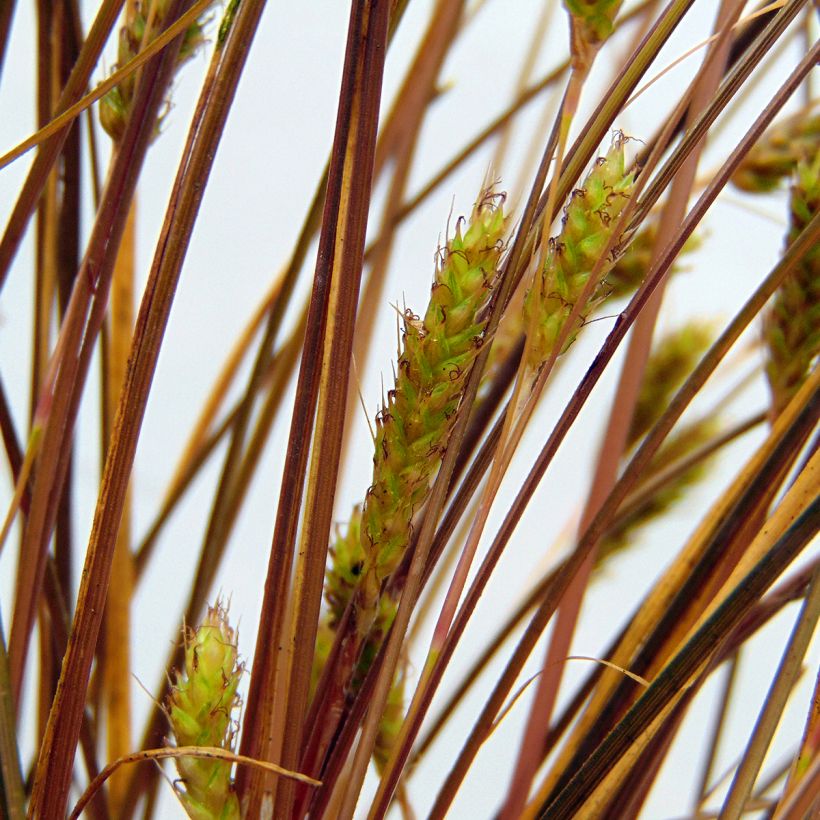

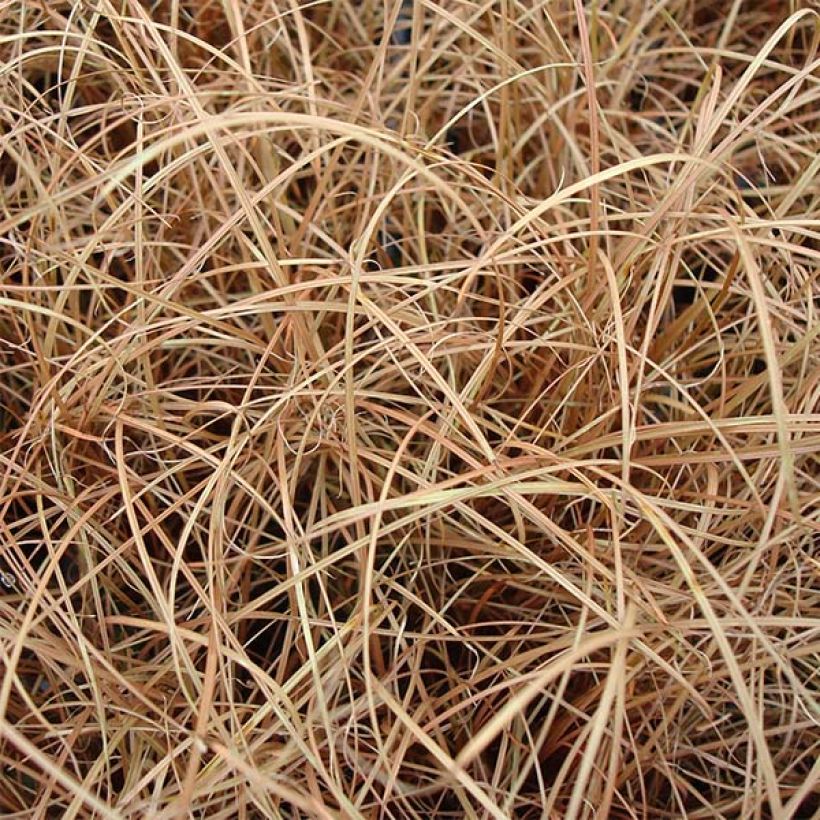

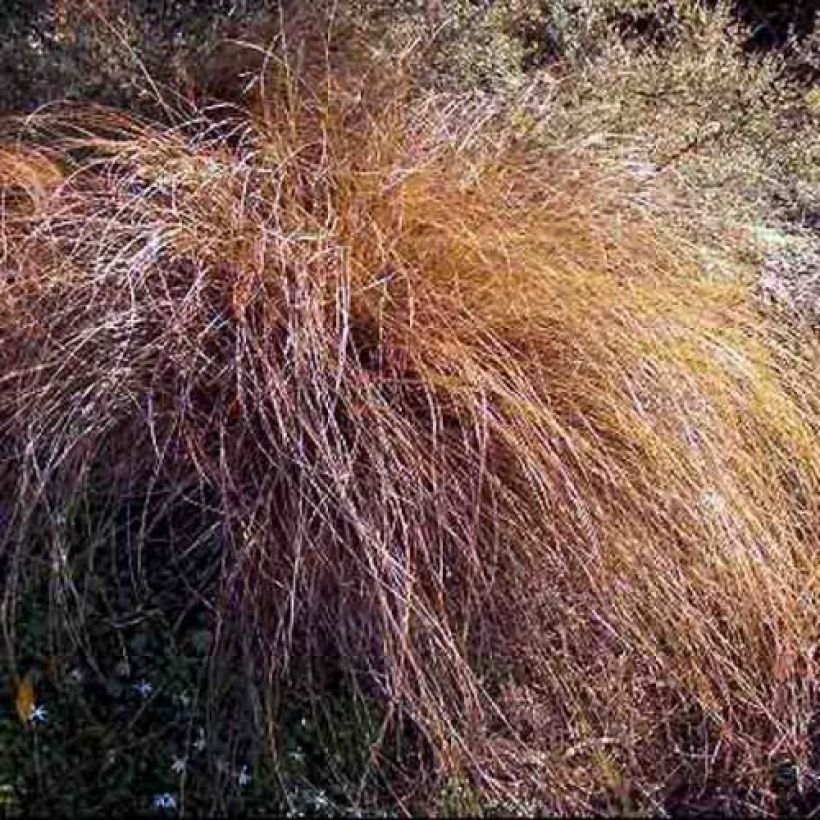

Flowering
Foliage
Plant habit
Botanical data
Carex
flagellifera
Cyperaceae
Weeping Sedge, Brown Sedge, Sedge grass
Oceania
Other Carex
View all →Planting and care
Prepare a planting hole that is 20x20x20cm (8x8x8in) in size. If your soil is heavy, mix some compost and river sand with the crumbled soil, partially fill the hole, and place your plant so that the top of the root ball is covered with 3cm (1in) of soil. Firmly press down and water generously to eliminate air pockets. In dry weather, you will need to water regularly for a few weeks to facilitate the establishment of your young plant. Carex flagellifera prefers soil that remains moist but well-drained, so feel free to add river sand or pumice to the planting hole to improve drainage. It is fairly indifferent to the soil pH, which can be slightly acidic, neutral, or slightly alkaline. Excessive winter moisture can harm the hardiness of this plant, which tolerates short frosts of around -8°C (17.6°F).
Planting period
Intended location
Care
Planting & care advice
-
, onOrder confirmed
Reply from on Promesse de fleurs
Similar products
Haven't found what you were looking for?
Hardiness is the lowest winter temperature a plant can endure without suffering serious damage or even dying. However, hardiness is affected by location (a sheltered area, such as a patio), protection (winter cover) and soil type (hardiness is improved by well-drained soil).

Photo Sharing Terms & Conditions
In order to encourage gardeners to interact and share their experiences, Promesse de fleurs offers various media enabling content to be uploaded onto its Site - in particular via the ‘Photo sharing’ module.
The User agrees to refrain from:
- Posting any content that is illegal, prejudicial, insulting, racist, inciteful to hatred, revisionist, contrary to public decency, that infringes on privacy or on the privacy rights of third parties, in particular the publicity rights of persons and goods, intellectual property rights, or the right to privacy.
- Submitting content on behalf of a third party;
- Impersonate the identity of a third party and/or publish any personal information about a third party;
In general, the User undertakes to refrain from any unethical behaviour.
All Content (in particular text, comments, files, images, photos, videos, creative works, etc.), which may be subject to property or intellectual property rights, image or other private rights, shall remain the property of the User, subject to the limited rights granted by the terms of the licence granted by Promesse de fleurs as stated below. Users are at liberty to publish or not to publish such Content on the Site, notably via the ‘Photo Sharing’ facility, and accept that this Content shall be made public and freely accessible, notably on the Internet.
Users further acknowledge, undertake to have ,and guarantee that they hold all necessary rights and permissions to publish such material on the Site, in particular with regard to the legislation in force pertaining to any privacy, property, intellectual property, image, or contractual rights, or rights of any other nature. By publishing such Content on the Site, Users acknowledge accepting full liability as publishers of the Content within the meaning of the law, and grant Promesse de fleurs, free of charge, an inclusive, worldwide licence for the said Content for the entire duration of its publication, including all reproduction, representation, up/downloading, displaying, performing, transmission, and storage rights.
Users also grant permission for their name to be linked to the Content and accept that this link may not always be made available.
By engaging in posting material, Users consent to their Content becoming automatically accessible on the Internet, in particular on other sites and/or blogs and/or web pages of the Promesse de fleurs site, including in particular social pages and the Promesse de fleurs catalogue.
Users may secure the removal of entrusted content free of charge by issuing a simple request via our contact form.
The flowering period indicated on our website applies to countries and regions located in USDA zone 8 (France, the United Kingdom, Ireland, the Netherlands, etc.)
It will vary according to where you live:
- In zones 9 to 10 (Italy, Spain, Greece, etc.), flowering will occur about 2 to 4 weeks earlier.
- In zones 6 to 7 (Germany, Poland, Slovenia, and lower mountainous regions), flowering will be delayed by 2 to 3 weeks.
- In zone 5 (Central Europe, Scandinavia), blooming will be delayed by 3 to 5 weeks.
In temperate climates, pruning of spring-flowering shrubs (forsythia, spireas, etc.) should be done just after flowering.
Pruning of summer-flowering shrubs (Indian Lilac, Perovskia, etc.) can be done in winter or spring.
In cold regions as well as with frost-sensitive plants, avoid pruning too early when severe frosts may still occur.
The planting period indicated on our website applies to countries and regions located in USDA zone 8 (France, United Kingdom, Ireland, Netherlands).
It will vary according to where you live:
- In Mediterranean zones (Marseille, Madrid, Milan, etc.), autumn and winter are the best planting periods.
- In continental zones (Strasbourg, Munich, Vienna, etc.), delay planting by 2 to 3 weeks in spring and bring it forward by 2 to 4 weeks in autumn.
- In mountainous regions (the Alps, Pyrenees, Carpathians, etc.), it is best to plant in late spring (May-June) or late summer (August-September).
The harvesting period indicated on our website applies to countries and regions in USDA zone 8 (France, England, Ireland, the Netherlands).
In colder areas (Scandinavia, Poland, Austria...) fruit and vegetable harvests are likely to be delayed by 3-4 weeks.
In warmer areas (Italy, Spain, Greece, etc.), harvesting will probably take place earlier, depending on weather conditions.
The sowing periods indicated on our website apply to countries and regions within USDA Zone 8 (France, UK, Ireland, Netherlands).
In colder areas (Scandinavia, Poland, Austria...), delay any outdoor sowing by 3-4 weeks, or sow under glass.
In warmer climes (Italy, Spain, Greece, etc.), bring outdoor sowing forward by a few weeks.






























